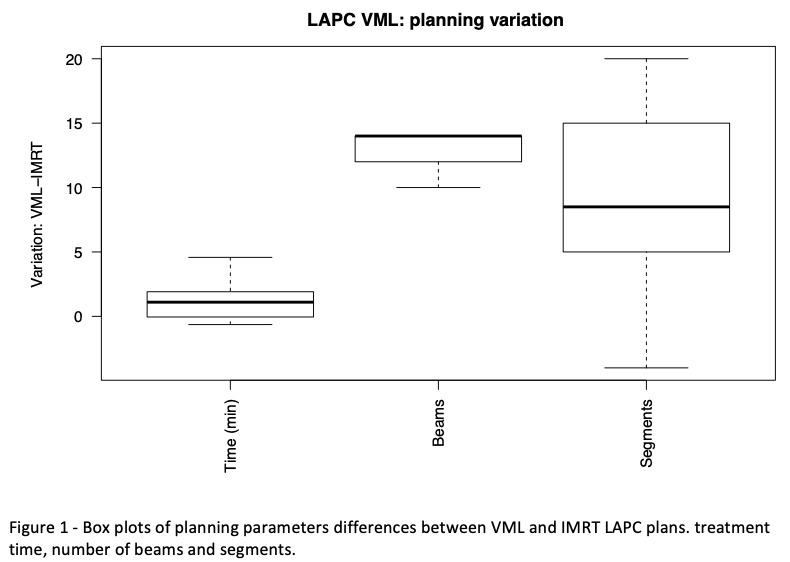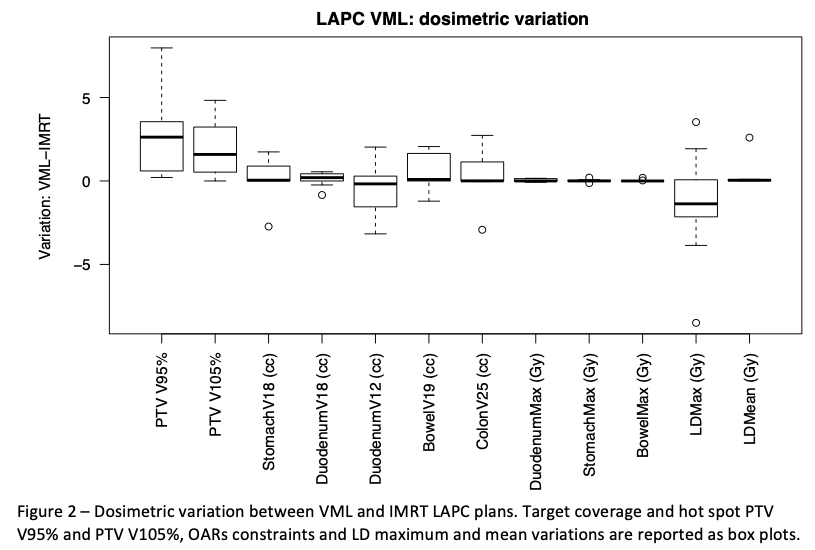Evaluation of VMAT-like planning technique for magnetic resonance guided radiotherapy treatment
PO-1861
Abstract
Evaluation of VMAT-like planning technique for magnetic resonance guided radiotherapy treatment
Authors: Lorenzo Placidi1, Matteo Nardini1, Davide Cusumano1, Luca Boldrini1, Giuditta Chiloiro1, Angela Romano1, Claudio Votta1, Marco Valerio Antonelli1, Vincenzo Valentini1, Luca Indovina1
1Fondazione Policlinico Universitario A. Gemelli IRCCS, Radiation Oncology, Rome, Italy
Show Affiliations
Hide Affiliations
Purpose or Objective
Volumetric modulated arc therapy (VMAT) or other dynamic delivery techniques, is currently not applicable to Magnetic Resonance-guided radiotherapy (MRgRT), due to the production of artifacts during the online imaging acquisition, caused by the motion of ferromagnetic material in a magnetic field. Significantly increasing the number of step-and-shoot IMRT beams can lead to deliver a discretized VMAT, with significant advantages in terms of dose conformality, generating a so-called “VMAT-like” (VML) treatment. The aim of this study is to evaluate and quantify the dosimetric and planning advantages of the VML delivery technique in order to further improve MRgRT irradiation workflow.
Material and Methods
Three consecutive phases have identified for this in silico study: firstly, planning and dosimetric validation of the VML treatment on 10 different diseases in terms of site, tumour size, dose prescription, and irradiation setting, keeping the same optimisation parameters of the IMRT plans delivered in clinical practice. Phase 2 consists in the evaluation of 10 re-optimised VML plans in case of patients affected by locally advanced pancreas cancer (LAPC), as one of the most challenging case of online adaptive MRgRT. Finally, in phase 3, it has been evaluated the evaluation of LAPC VML robustness and comparison with clinical IMRT plans, when a lateral positioning error of ± 5 mm is manually introduced.
The comparison between IMRT and VML plans was performed considering the following parameters: number of beams, number of IMRT segments beam on time, total treatment time, target coverage (PTV V95%>95%), hot spots (PTV V105<5%) and OARs constraints. In addition, to evaluate the low dose spread, a region of interest named “low doses” (LD) has been generated for each plan, as the difference between patient’s body and the Ring structure around the PTV of 3 cm thick. Finally, IMRT and VML plans were delivered on a 3D detector and the measured dose distribution was compared to the calculated one by the treatment planning system (TPS) in terms of global gamma analysis.
Results
In phase one, all VML plans were within constraint for all OARs. When PTV coverage is considered, in the 50% of the cases VML PTV coverage is equal or higher than in IMRT plan. In the remaining 50%, the highest target under coverage difference in comparison with IMRT plan is -1.71%. The mean and maximum treatment time differences (VML-IMRT) is 0.2 min and 3.1 min respectively. The VML gamma analysis resulted always within the tolerance and in 60% of the cases showed higher gamma passing rates when compared to the IMRT plans. Results of phase two are reported in figure 1 and 2.


As regards of phase 3, no significant differences have been observed between the VML and IMRT shifted plans.
Conclusion
VMAT-like treatment approach appeared to be an efficient planning solution and it was decided to clinically implement it in daily practice, especially in the frame of hypo fractionated treatments.